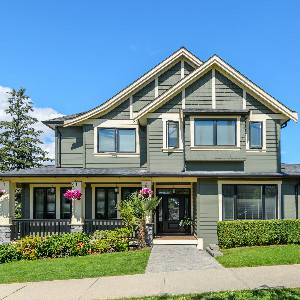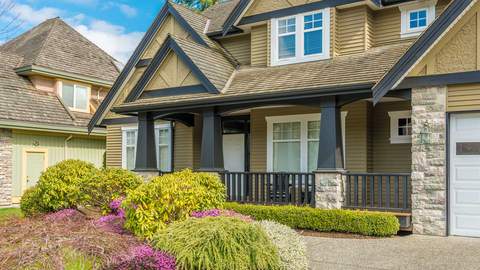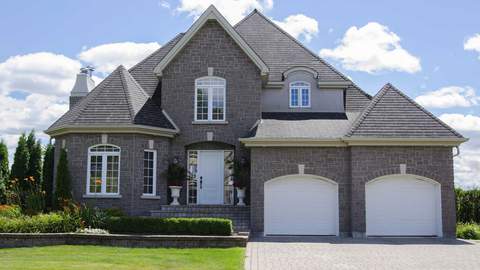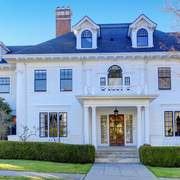Investigate the alternatives to foreclosure as soon as you know your mortgage is unaffordable.
You have several alternatives to foreclosure if you can no longer afford your home loan. Mortgage lenders, states and the federal government all have options to help you avoid foreclosure.
Step 1: Call your lender
You know when your mortgage is no longer affordable. Before you miss a payment or as soon as you miss a payment, call your mortgage lender. Your lender may allow you to defer a payment or get a forbearance of payments for a short period of time. If you are facing a financial hardship that will cause you to miss more than one payment, your lender may recommend a loan refinance or modification through internal programs or federal Making Home Affordable (MHA) programs.
Step 2: Refinance your loan
 If you are not late on mortgage payments, but know you will soon struggle to pay them, consider refinancing your home loan to lower payments. Mortgage rates are at historic lows - refinancing can reduce your mortgage payment drastically.
If you are not late on mortgage payments, but know you will soon struggle to pay them, consider refinancing your home loan to lower payments. Mortgage rates are at historic lows - refinancing can reduce your mortgage payment drastically.
This alternative to foreclosure typically requires good credit and a stable income. It will be harder for you to refinance once you are late on mortgage payments and your credit scores drop. A late mortgage payment can drop your credit scores significantly within a month.
If you are not behind on your mortgage, but cannot get traditional refinancing because your home is worth less than what you owe, the federal Home Affordable Refinance Program (HARP) offers a solution. This program was designed to help millions of homeowners who bought real estate at the top of the housing bubble and are now underwater on their home loan. You will pay refinance fees - but the new, stable mortgage will be worth the investment.
Step 3: Seek state or federal assistance
Refinancing may not be the solution to your financial hardship. You may qualify for a dozen different programs under MHA. Since 2008, almost three million American homeowners have been able to avoid foreclosure through the Home Affordable Modification Program (HAMP) alone. The Obama Administration recently expanded HAMP to include homeowners who were not eligible previously, so it is very likely to be a good solution for you.
You can explore the MHA programs and find the contact information for housing counselors who know the best option for your situation. The Hardest Hit Fund, for example, funneled over seven billion dollars to 18 states and the District of Columbia to help homeowners stop home foreclosure. Your state program may help you get a loan modification, refinance, make mortgage payments or relocate.
Because getting approved for a MHA program can take months, it's best to look at your options as soon as you face financial hardship. To learn more about home modification programs through the government, go to this article .
Step 4: Sell in pre-foreclosure
 Selling your home in pre-foreclosure is another alternative to foreclosure. Obviously, this is only the best option if you want to move or don't think you can afford your mortgage even if it is reduced. You can attempt to sell your home yourself or hire a real estate agent who specializes in pre-foreclosure sales. If you owe more on your property than its market value, your sale will be a short sale.
Selling your home in pre-foreclosure is another alternative to foreclosure. Obviously, this is only the best option if you want to move or don't think you can afford your mortgage even if it is reduced. You can attempt to sell your home yourself or hire a real estate agent who specializes in pre-foreclosure sales. If you owe more on your property than its market value, your sale will be a short sale.
For a short sale, you will need permission from your lender to sell for less than you owe. You'll also want to ask the lender for a written release from the responsibility of a deficiency balance if you have a successful short sale. Otherwise, the lender may require you pay the difference between the amount the home sells for and the amount you owe.
If your mortgage lender doesn't offer to forgive the deficiency balance, you should investigate the Home Affordable Foreclosure Alternatives (HAFA) program. If you sell your home in a short sale under HAFA, your lender is required to release you from the entire mortgage debt, regardless of how short your sale price is. Additionally, you can get up to $10,000 in relocation assistance through the HAFA program.
Step 5: Get a Deed-in-Lieu of foreclosure
In some situations, the only way to avoid foreclosure is a Deed-in-Lieu (DIL) of foreclosure. A DIL requires you to give your home and title back to the mortgage lender. You may get a DIL directly from your lender or through the HAFA program mentioned above. You are more likely to get relocation assistance if you get a DIL through HAFA rather than through your lender. Either way, a DIL is less damaging to your credit than a foreclosure. Your lender will issue a 1099 for the money it writes off in the DIL, so the biggest consequence to you is that you may owe taxes on the earnings. In many instances, if you use a DIL as an alternative to foreclosure, you may ask the IRS to exclude this income under The Mortgage Forgiveness Debt Relief Act and Debt Cancellation.
Step 6: File bankruptcy
 Bankruptcy does stop home foreclosure, but it is equally damaging, if not more damaging to your credit. Bankruptcy should only be an option if your financial hardship far extends defaulting on your mortgage. With the federal and state programs available, you will probably find a less damaging and less costly alternative to foreclosure. Talk to an attorney about the different types of bankruptcy and how they will stop your home foreclosure if bankruptcy seems like your only option.
Bankruptcy does stop home foreclosure, but it is equally damaging, if not more damaging to your credit. Bankruptcy should only be an option if your financial hardship far extends defaulting on your mortgage. With the federal and state programs available, you will probably find a less damaging and less costly alternative to foreclosure. Talk to an attorney about the different types of bankruptcy and how they will stop your home foreclosure if bankruptcy seems like your only option.
Home foreclosure stoppage may seem impossible, but the sooner you investigate your options, the sooner you realize you have several ways to stop home foreclosure. Most lenders want to help you avoid foreclosure, because the process is costly and time-consuming. However, if your lender states they have no avenues to help you, contact an MHA housing counselor immediately.
RealtyNow is a national resource for real estate professionals and mortgage lenders. To research your home's worth or get connected with a professional in your area today, go to RealtyNow.
















Write a Comment